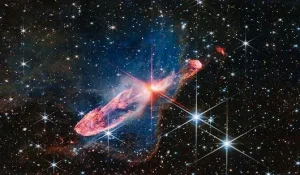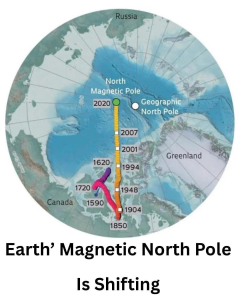
A black hole is a region of spacetime where gravity is so strong that nothing, not even light, can escape. The theory of general relativity predicts that a sufficiently compact mass can deform spacetime to form a black hole. The boundary of no escape is called the event horizon. Although it has a great effect on the fate and circumstances of an object crossing it, it has no locally detectable features according to general relativity. In many ways, a black hole acts like an ideal black body, as it reflects no light.

The defining feature of a black hole is the appearance of an event horizon—a boundary in spacetime through which matter and light can pass only inward towards the mass of the black hole. Nothing, not even light, can escape from inside the event horizon. The event horizon is referred to as such because if an event occurs within the boundary, information from that event cannot reach an outside observer, making it impossible to determine whether such an event occurred. As predicted by general relativity, the presence of a mass deforms spacetime in such a way that the paths taken by particles bend towards the mass.
Black holes are formed when massive stars collapse at the end of their lives. When a star runs out of fuel, it can no longer support its own weight and collapses under its own gravity. If the star is massive enough, the collapse will create a black hole.

Black holes are invisible, but they can be detected by the effects of their gravity on nearby objects. For example, if a black hole is passing in front of a star, it will cause the star to appear to dim. Black holes can also be detected by the radiation that is emitted when matter falls into them.
Black holes are a fascinating and mysterious object. We still have much to learn about them, but they are a vital part of our understanding of the universe.

Here are some of the most interesting facts about black holes:
- The smallest black holes are about the size of an atom, while the largest black holes are billions of times the mass of the sun.
- Black holes are so dense that a teaspoon of black hole matter would weigh as much as a mountain on Earth.
- Black holes are so powerful that they can bend light.
- Black holes can merge together to form even larger black holes.
- Black holes may be the source of the mysterious gamma-ray bursts.
- Black holes may play a role in the formation of new stars and galaxies.
Black holes are a fascinating and mysterious object. We still have much to learn about them, but they are a vital part of our understanding of the universe.
A black hole is a region in space where gravity is so strong that nothing, not even light, can escape its gravitational pull. It is formed when a massive star undergoes a catastrophic collapse, resulting in an extremely dense object with a gravitational field that is incredibly intense.
Key characteristics and concepts related to black holes:
- Singularity: At the center of a black hole lies a point called a singularity. It is an infinitely small and dense region, where matter is crushed to an infinite density and spacetime is highly curved. The laws of physics, as currently understood, break down at the singularity.
- Event Horizon: Surrounding the singularity is the event horizon, which is the boundary beyond which nothing can escape. Once an object crosses the event horizon, it is effectively trapped within the black hole’s gravitational pull. The event horizon is often referred to as the “point of no return.”
- Size and Mass: Black holes can vary in size and mass. Stellar black holes are formed from the collapse of massive stars and typically have a mass several times that of our Sun. Supermassive black holes, on the other hand, can have millions or even billions of times the mass of the Sun and are found at the centers of galaxies.
- Accretion Disk: When matter from its surroundings, such as gas or dust, falls into a black hole, it forms an accretion disk. The gravitational forces cause the material in the disk to swirl and heat up, emitting high-energy radiation that can be detected by telescopes.
- Spacetime Curvature: Black holes bend and distort spacetime around them due to their immense mass. This curvature affects the motion of objects and light passing near the black hole, causing them to follow curved paths.
- Hawking Radiation: Stephen Hawking’s groundbreaking work showed that black holes are not completely black but emit a faint form of radiation called Hawking radiation. According to quantum mechanics, pairs of virtual particles and antiparticles can be created near the black hole’s event horizon. In some cases, one of these particles falls into the black hole while the other escapes as radiation, leading to a slow evaporation of the black hole over time.
While black holes themselves do not emit light, their presence can be indirectly detected through their gravitational influence on surrounding matter or by observing the effects of their immense gravity on nearby objects. Scientists study black holes to better understand the fundamental properties of gravity, spacetime, and the behavior of matter under extreme conditions.
It is worth noting that our understanding of black holes is based on the theory of general relativity and various astrophysical observations. However, there is ongoing research to further refine our understanding and explore phenomena such as the nature of the singularity and the behavior of matter inside black holes.
Quantum Voyage (The Black Hole) | Full Movie Sci-Fi Thriller | Malcolm McDowell





